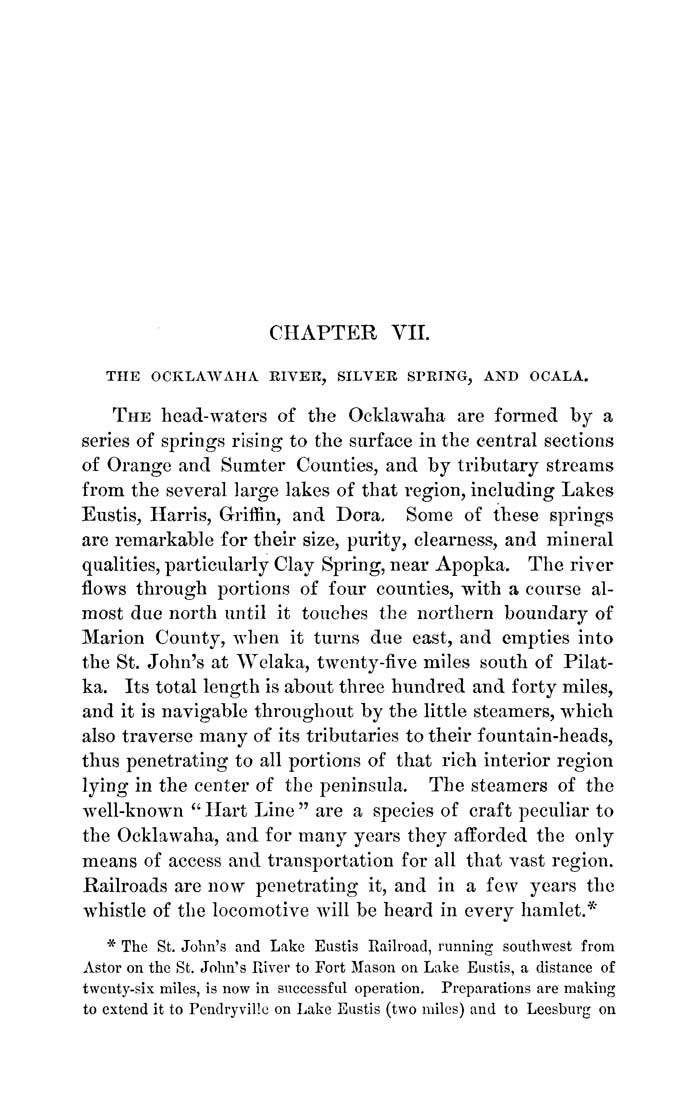CHAPTER YIL
THE OCKLAWAHA RIVEK, SILVER SPRING, AND OCALA.
The head-waters of the Ocklawaha are formed by a
series of springs rising to the surface in the central sections
of Orange and Sumter Counties, and by tributary streams
from the several large lakes of that region, including Lakes
Eustis, Harris, Grifiin, and Dora, Some of these springs
are remarkable for their size, purity, clearness, and mineral
qualities, particularly Clay Spring, near Apopka. The river
flows through portions of four counties, with a course al¬
most due north until it touches the northern boundary of
Marion County, when it turns due east, and empties into
the St. John's at Welaka, twenty-five miles south of Pilat-
ka. Its total length is about three hundred and forty miles,
and it is navigable throughout by the little steamers, which
also traverse many of its tributaries to their fountain-heads,
thus penetrating to all portions of that rich interior region
lying in the center of the peninsula. The steamers of the
well-known '^ Hart Line " are a species of craft peculiar to
the Ocklawaha, and for many years they afforded the only
means of access and transportation for all that vast region.
Railroads are now penetrating it, and in a few years the
whistle of the locomotive will be heard in every hamlet.*
* The St. John's and Lake Eustis Railroad, running southwest from
Astor on the St. John's River to Fort Mason on Lake Eustis, a distance of
twenty-six miles, is now in successful operation. Preparations are making
to extend it to Pendryville on Lake Eustis (two miles) and to Leesburg on
|








